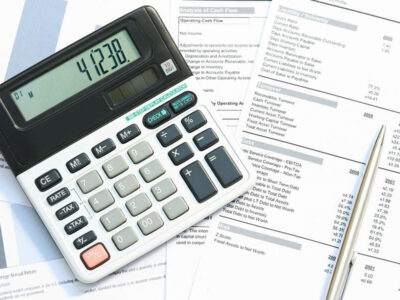
The cash basis of accounting involves only recording transactions when the cash related to them is either paid out or received. A company’s finances can be handled using either the cash basis or the accrual basis of accounting. Obviously, the financial world needs an accurate picture with sufficient detail from an income statement, balance sheet, and cash flow statement, something cash accounting simply can’t provide. Further, such a thorough approach goes well beyond the mere basics that would typically appease the IRS for tax purposes. Maybe peer pressure is making you want to hang with the cool kids on the GAAP side of the accounting fence.
What is Cash Conversion Ratio?
- On Form 3115, you’ll need to report changes to income on a 481 Adjustment Summary.
- The conversion of cash basis to accrual basis accounting can be a difficult one, for any accounting software that has been configured for the cash basis is not designed to handle accrual basis accounting.
- One key aspect is the requirement to file Form 3115, the Application for Change in Accounting Method.
- In this manner, the suppliers are technically financing the company’s operations.
- The cash conversion ratio, often abbreviated as “CCR” for brevity, reflects the proportion of the net profit generated by a company that becomes operating cash flow (OCF).
- This metric reflects the company’s payment of its own bills or accounts payable (AP).
For instance, you cannot use the cash-basis accounting for the businesses that manufacture, purchase, or sell physical products. Corporations, partnerships, and QPCs are all eligible to employ cash-basis accounting with the IRS so long as they meet specific requirements. See the above table as proof – if you take the https://www.bookstime.com/articles/accounting-for-churches accrual basis income and net the differences from the payables and receivables then you’ll arrive at the current year cash basis net income. But for as many doors as a conversion to the accrual method can open for your business, it doesn’t come without hurdles and the need for a well-informed, organized approach.
What is Deferred Revenue and Why is it a Liability?
On that note, we suggest keeping a few specific areas in mind since they tend to be common when companies convert from cash accounting to GAAP accounting. Granted, they all won’t apply to every entrepreneur, sole proprietor, or wide-eyed accrual to cash conversion formula business person out there, but they can help you acclimate as you wade into the accrual accounting waters. Subtract cash expenditures made for expenses that should have been recorded in the preceding accounting period.
Convert Your Cash-Basis Books to Accrual at Tax Time

It is used to determine all cash generated in a given financial period – often quarterly or annually, depending on the company’s accounting cycles. The cash conversion cycle (CCC) is one of several metrics used to gauge how well management uses working capital. This metric measures the amount of time a company takes to turn money invested in operations into cash. Accountants use certain formulas to depict the shift from an accrual basis to a cash basis. This makes the overall shift from accrual to cash relatively easier. According to GAAP, the cash-basis method of accounting is unacceptable.

You meet with your tax advisor and discover that because your business involves a lot of inventory, you need to use the accrual basis on your tax return. If you’ve invoiced customers for work you’ve performed but haven’t been paid for, your accountant will increase revenues by that amount. Your accountant will increase your expenses for any costs you’ve incurred. For example, if you owe employees a week’s worth of wages that won’t be paid until after year end, they’ll add those accrued wages to your expenses.
Can you change from accrual to cash adjustment journal entry?
First, you must adjust your books to reflect the accrual method. You must also fill out and file a form with the IRS to request the change. When an invoice is created, you will record the transaction as “Earned Revenue” on your balance sheet. The shorter the cash conversion cycle, the more cash you have to capture opportunities, make investments, or pay critical bills. Let’s look into how you can maximize your return on investment by better managing the cycle. I also have a cash conversion cycle calculator that shows how long your cycle is and how much your profits might go up with a shorter cycle.
Is cash accounting in accordance with GAAP?
For each prepaid expense, create a journal entry by debiting the Prepaid Expenses account and crediting the relevant expense account for the goods or services received. Similarly, accrued liabilities and wages also need to be adjusted when converting to accrual accounting. To account for these expenses, analyze wage records to determine the amounts owed to employees.
- By eliminating accounts receivable, your income immediately lowers.
- This article is intended to cover basic concepts of an accrual to cash conversion and discuss how to properly report business income on a cash basis when given a set of accrual basis books.
- The modifications, as mentioned earlier, are essential for a seamless change from the accrual to the cash adjustment journal entry.
- The cash-to-accrual conversion entry fixes the accrued expenses payable account.
- In portfolio management, it is used to determine the number of the common shares which a company has been receiving at a specific time of conversion of each convertible security.
- Get up and running with free payroll setup, and enjoy free expert support.
Since cash payments are still unpaid, in addition to the current period sales, the need to make adjustments stems primarily from this necessity. Subtracting accrued expenses from the financial statements is necessary for switching from the accrual to cash adjustment journal entries. If a supplier invoice cannot verify an accumulated expense, reverse it in the financials. The accrued liabilities section of the balance sheet is where you may quickly find this data.

Interim Leadership vs. Temp Staffing: Choose Wisely, Finance and Accounting

